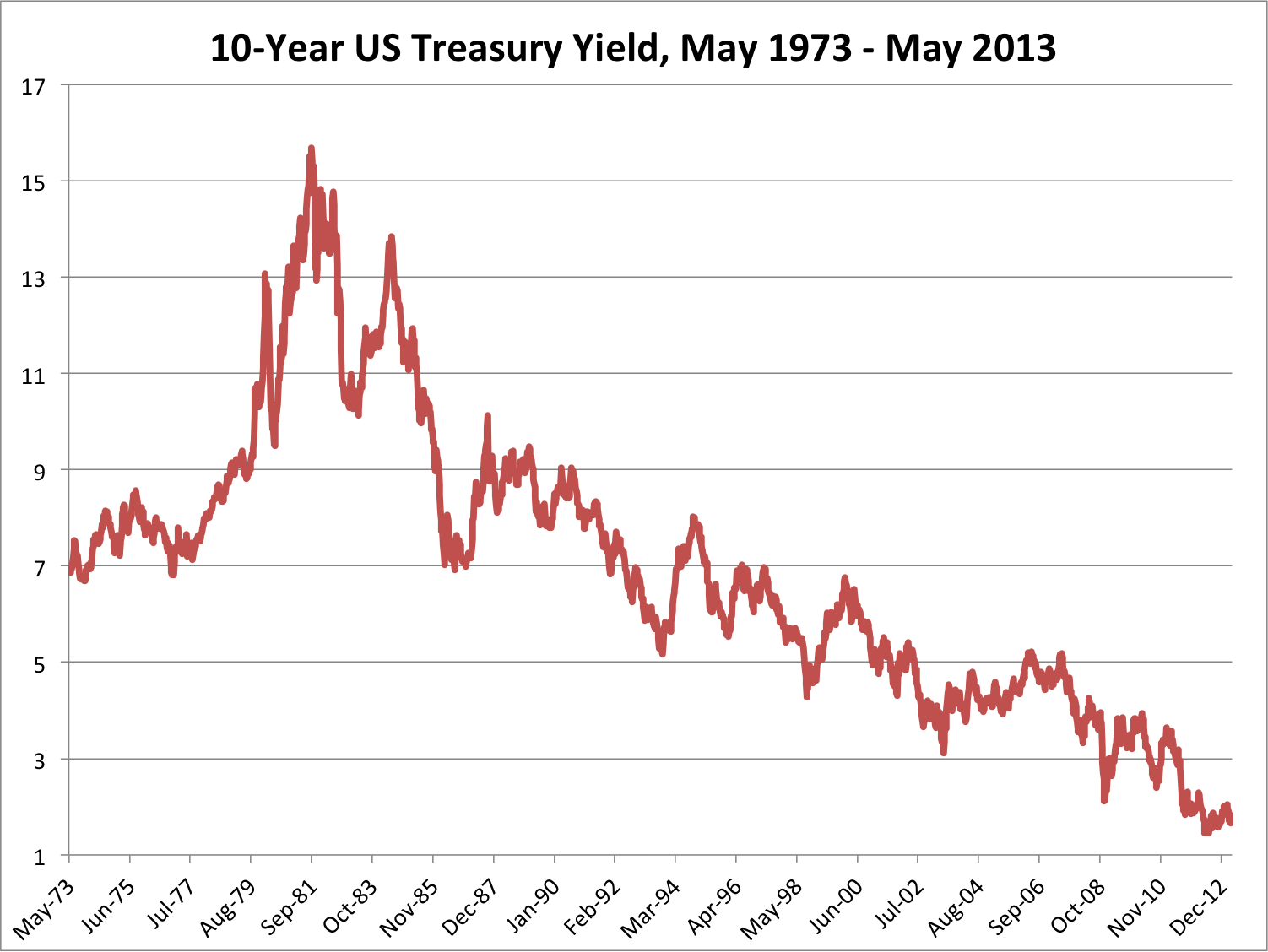Here’s what I wish Ben Bernanke would say to Congress this week: “Stop worrying about inflation and fretting about when we are going to stop buying bonds…instead, start thinking about deflation and why the globe is slowing down.” Let me explain. Despite stock indexes rising to new nominal record highs last week (and being up 23 percent in the past six months without a 5 percent correction,) these days, most of the chatter on trading floors boils down to a simple question: When will the Fed taper its monthly purchase of $85 billion worth of bonds? Some are worried that as the US economy improves, the Fed will remove the punch bowl of easy money, which would likely mean a pause in the stock market rally and an end to the 30-year bull-run for bonds.
That’s why all eyes will be on Federal Reserve Chairman Ben Bernanke, as he testifies before Congressional subcommittees this week about the state of the economy and current Fed policies. It’s expected that Bernanke will reiterate that the central bank plans to pump money into the system at least until the unemployment rate drops to 6.5 percent from its current level of 7.5 percent. But stable employment is only half of the Fed’s dual mandate: it is also supposed to maintain stable prices.
Over the past 30 years, price stability has generally meant that the Fed would use its toolkit to fight inflation, but with tame readings on prices across most of the globe, the world's central bankers might have to confront new enemies: deflation (falling prices) and disinflation (slowing of price increases).
It would be great if during his testimony, Bernanke underscored that the biggest problem facing the economy is weak demand and falling prices, not runaway inflation. For all of the hand wringing over the Fed’s “money-printing” policies, there is no evidence of inflation. The Consumer Price Index (CPI) fell to a 2 ½-year low of 1.1 percent year-over-year and core inflation, which removes the volatile energy and food categories, tumbled to a 22-month low of 1.7 percent, below the 2 percent level that the Federal Reserve targets.
What does this all mean? With prices falling, manufacturing slowing and unemployment still high, it’s hard to see why the Fed would alter its current policy. That may mean that the stock market has room to run, especially as investors who have pooh-poohed the rally, now scramble to pile in. A good old fashioned melt-up is occurring before our very eyes!
Markets: With new nominal highs for the Dow and the S&P 500, you might have forgotten about two social media IPO anniversaries. Facebook went public on 5/18/12 and one year hence, the stock is down 31 percent. There was a bit more to celebrate at LinkedIn, where 2-years after its IPO (5/19/11), the stock us up 96 percent.
- DJIA: 15,354, up 1.6% on week, up 17.2% on year
- S&P 500: 1667, up 2% on week, up 16.9% on year (up 1,000 points or 150% since 3/09)
- NASDAQ: 3499, up 1.8% on week, up 15.9% on year
- June Crude Oil: $96.29, up .01% on week
- June Gold: $1364.70, down 5% on week (down 18.5% year to date)
- AAA Nat'l average price for gallon of regular Gas: $3.64
THE WEEK AHEAD:
Mon 5/20:
8:30 Chicago Fed National Activity
Tues 5/21:
Weds 5/22:
10:00 Existing Home Sales
10:00 Ben Bernanke to testify on US economy before Congressional subcommittees
2:00 Fed minutes released
Thurs 5/23:
8:30 Weekly Claims
9:00 FHFA Home Price Index
10:00 New Home Sales
Fri 5/24:
8:30 Durable Goods Orders
![Jill on Money [ Archive]](http://images.squarespace-cdn.com/content/v1/59efbd48d7bdce7ee2a7d0c4/1510342916024-TI455WZNZ88VUH2XYCA6/JOM+Blue+and+White.png?format=1500w)




